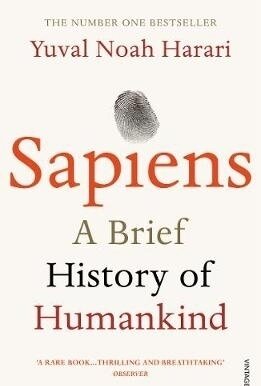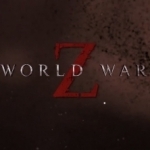
Electronic Toolbox Pro
Productivity and Education
App
The *** ORIGINAL *** Electronic Toolbox Pro App Electronic reference and calculation resource for...

Currency Converter: Calculator
Travel and Utilities
App
______◢◤ “A TRAVEL ESSENTIAL!” [Free for a limited time only] ◥◣______ Ever wonder how...

Montessori Nature
Games and Education
App
This app offers a very realistic environment in which kids have to plant, nurture, harvest, and sell...

Mike V: Skateboard Party Lite
Games and Sports
App
Play with your friends using the multiplayer mode, complete achievements, gain experience and...

100 Lebanese Recipes HD
Food & Drink and Lifestyle
App
NOW ON IPAD!! Top rankings: #1 in Lebanon, #4 in France, #5 in Venezuela, #11 in Germany, #14 in...

Le bonheur de lire dès 3 ans: les fondements de la lecture en maternelle
Education and Games
App
RENCH ONLY ‘Le bonheur de lire’ offers a fun and catchy gameplay. The child is immersed in a...
BookblogbyCari (345 KP) rated Sapiens: A Brief History of Humankind in Books
Aug 5, 2018
The book is an overview of homo-sapiens as a species, and how we have changed over the ages, and what we have done, before finally touching on where we are going. As such the book is a cross-pollination of history, sociology, and economics.
As you may expect from a book with such a broad scope, there are some sweeping statements, and rather than being a neutral dispassionate account, Harari makes his opinions very evident. However rather than being irritating, I feel this makes for a more entertaining read.
The book begins by introducing the theme of homo-sapiens in the context of the presence of the other human species that used to exist. He then goes on to describe the cognitive and agricultural revolutions. Then it’s the establishment of patriarchal social hierarchies across the world, largely based on historical conventions. Next Harari states that the purpose of religion is to unify fragile societies with superhuman legitimacy.
Harari then moves on to the scientific revolution, describing how an admission of ignorance by Europeans, along with a desire to discover and conquer new lands was key to the movement.
The conversation moves swiftly then to economics, using the fact that a bank can loan £10 for every £1 it has, to argue that our economics is based on trust in the future. Harari states that a country’s credit rating is more important than its actual resources. Harari describes capitalism and consumerism as being 2 sides of the same coin with two commandments: rich must invest, rest of us must buy. Consumerism, he says, aims to convince people that indulgence is good and frugality is self-oppression.
Harari also argues that, now, instead of relying on local communities the individual relies on the market or the state. Parental authority no longer sacred, he says, and state intervenes. And so when Harari asks if we are any happier now than when we were hunter-gatherers, he argues that our rise of wealth is offset by the disintegration of community life.
Harari also speaks of ecological degradation and our tendency to treat other species as a means to an end, for example, the farming of cow's and chickens has cut years off the lives of both, since they are killed as soon as they reach their maximum weight.
In the final chapter, Harari speculates on the future of mankind. With improvements in medical knowledge comes new ethical conundrums, he says. How will we handle the options of genetic engineering? What will the advent of artificial intelligence mean for humanity?
In my book club, we found that the book generated a lot of talking points. What would the world be like now, had the other species of humans survived? Why have so many cultures across history and the world had patriarchal hierarchies? Can societies improve over time, or is one style better than another? Can communism be considered a religion? Are human rights really just a figment of our collective imagination?
Whilst not everyone in my book club enjoyed the book equally, I would say that it’s as enlightening as it is thought provoking. By the end, it was hard to argue with the author's conclusion that homo-sapiens are like dissatisfied and irresponsible gods.
Gareth von Kallenbach (980 KP) rated World War Z in Video Games
Jun 19, 2019
Played from a third person perspective; teams of four players either human or A.I. battle hordes of undead as they attempt to survive and complete various tasks. The game is set in four chapters, New York, Jerusalem, Moscow, and Tokyo, and each segment allows players to select from four new characters to play during the various segments of each locale.
Players start with a primary and secondary weapon and will have the ability to pick up more along the way. Weapons include various machine guns, rifles, grenades, pistols, crossbows, and heavy weapons which have a limited use but pack a big punch.
Players also have bladed weapons which can be used to slash their way through hordes but this needs to be used sparingly as players can become overrun in no time.
Players can also find useful items such as machine gun emplacements, electrical traps, and other weapons which can be deployed in certain areas to help stem the onslaught of undead.
Missions often detail searching for items, activating or deactivating items, escorting an individual, and so on but do keep up the intensity and the highly detailed maps are very engaging.
The enemies consist of standard Zombies, a Bull Zombie who rushes and can do great amounts of damage, a Lurker that hides in the shadows and pounces. There is the Screamer who lets out tons of noise and attracts large crowds of Undead, and the Gasbag which releases a toxic gas when shot.
Players can use health kits to heal themselves and others and ammunition and supplies can be found in chests as well as Breaching Charges which allow players to enter locked areas.
The biggest issues with most of the enemies is that they have a similar look and tend to just mass and rush straight at you. It is funny that you will see characters looking like they are dressed for the New York Subway running around Tokyo, Jerusalem, and Moscow while the playable characters are clearly dressed for and specific to the locale they are in.
The game also features a multiplayer function but to me this was a real disappointment. Hit detection was bad as emptying a full clip in an another player seemed to do nothing yet they could kill you with a single shot. There were also numerous Spawn Campers who picked off players whenever they entered the map. I am sure it will be adjusted in time but I was so disappointed with it that I spent the majority of my time playing the campaign which to me was a far superior experience.
The game retails for $39.99 which makes it a real bargain and new content has been promised to arrive at a future date which will extend the enjoyment of the game.
While the gaming community eagerly hopes and awaits for a new Left 4 Dead game, World War Z is the closest to the fun and excitement of that series as getting your friends or being matched with others online to take down legions of Undead is a real thrill and one that this game has really captured where so many other recent efforts have failed.
http://sknr.net/2019/05/05/world-war-z-the-best-co-op-zombie-game-since-left-4-dead/

Busy Shapes
Education and Games
App
Are you in search of an innovative way to sharpen your child’s reasoning skills and awaken their...

R Programming Language with Essential Reference
Reference and Utilities
App
The classic R programming language for iPad, iPhone and iPod touch. Programming language is a...

